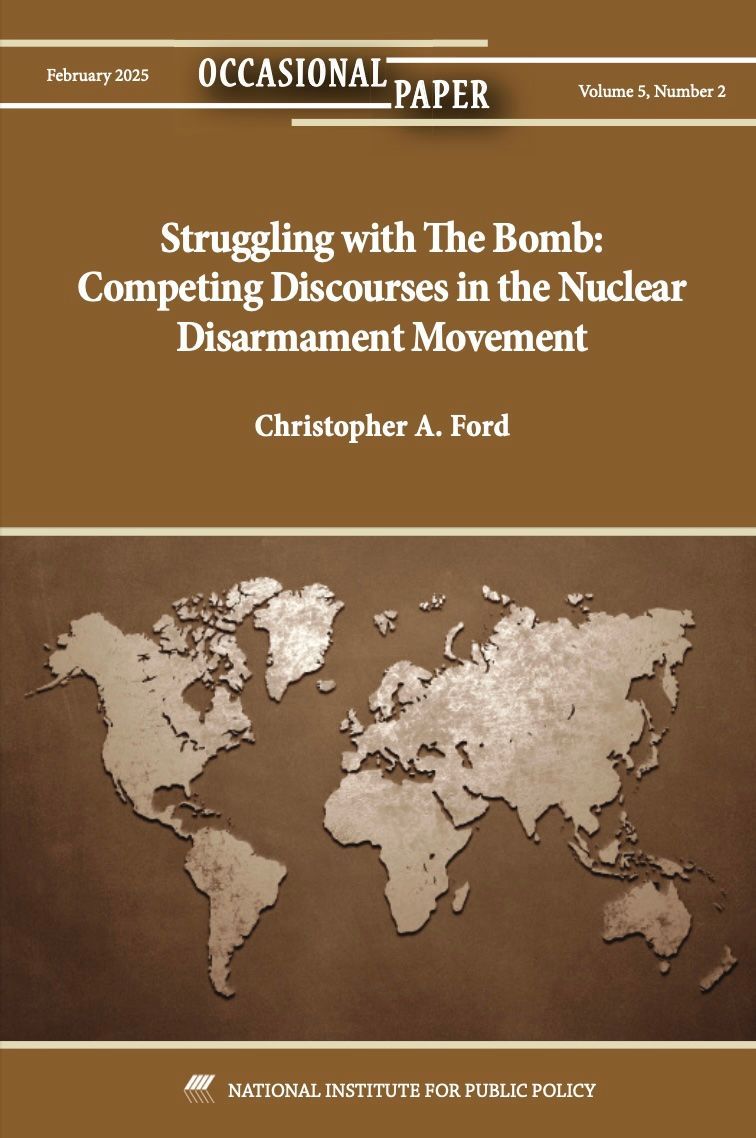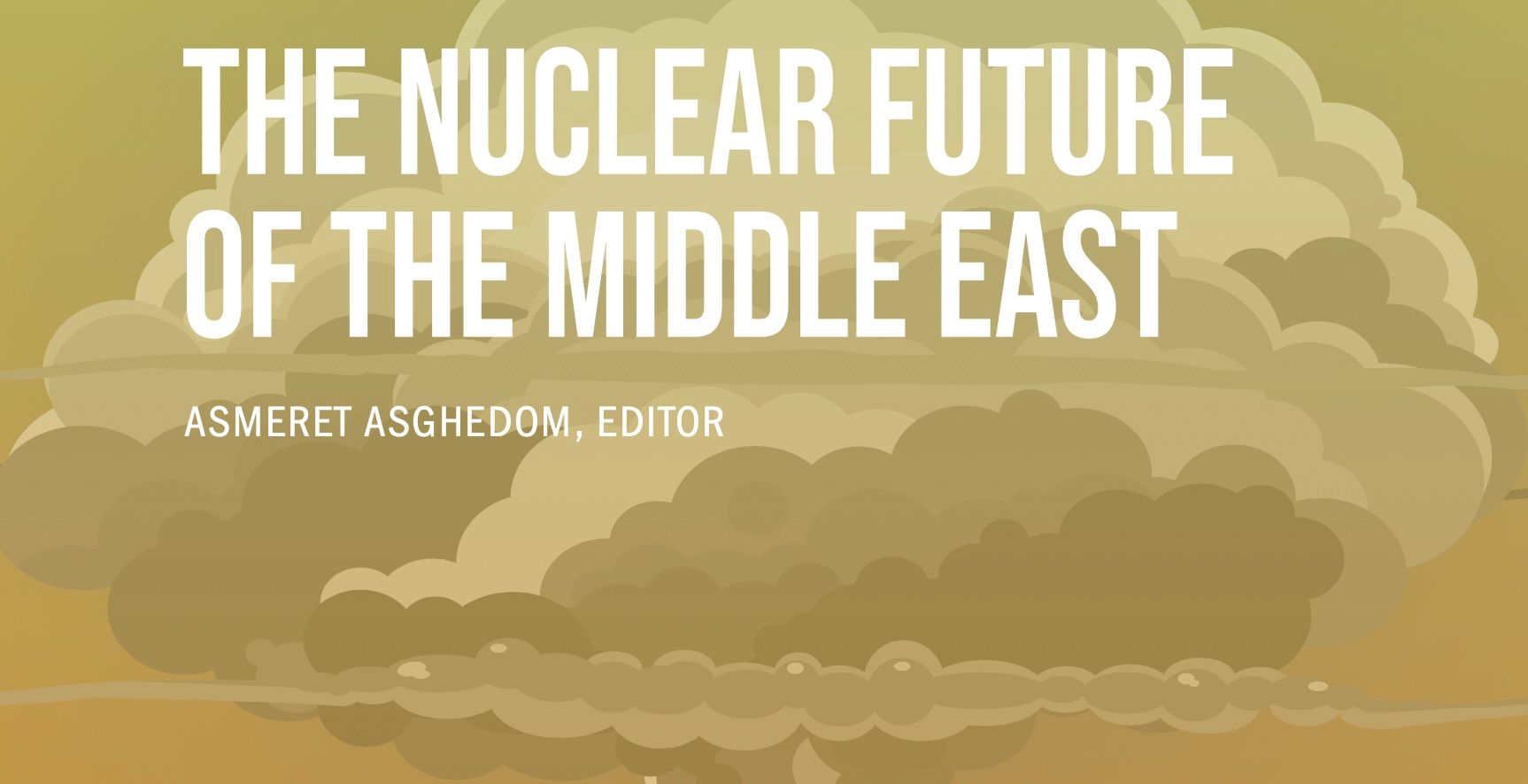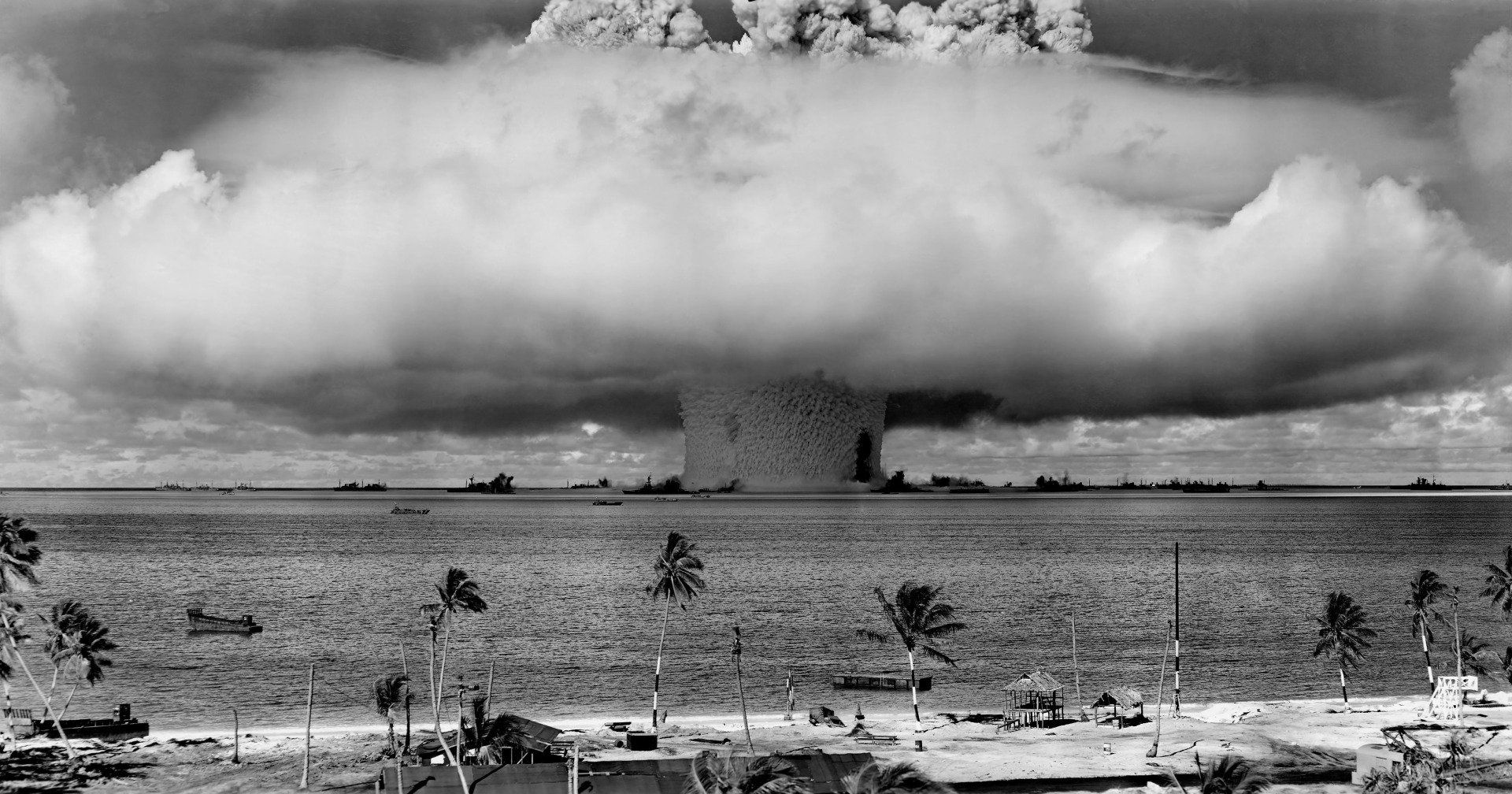China’s Struggle for Technology Dominance and U.S. Responses: An Insider’s Account
Below is the text from which Dr. Ford delivered his keynote remarks to the annual Washington, D.C., conference of the National Organization of Investment Professionals on April 20, 2023.
Good afternoon, and thanks very much for the kind introduction.
If I might, let first start with some caveats. The first is that the views I will express and the characterizations I’ll make represent only my own, and don’t necessarily reflect those of anyone else.
Caveat number two is that I am a foreign policy and national security guy, and I freely confess that I know very little about financial services and the work that you do. I believe it was the science fiction writer Arthur C. Clarke who said that any sufficiently advanced technology will be indistinguishable from magic, so when it comes to financial services, you good people are the wizards and I’m just the ignorant layman. And if anyone hired me to provide investment advice of the sort that you provide to your clients, they’d probably quickly come to need something that I am trained in: lawyering. So thanks for everything you do, and feel free to offer me any tips you like at the reception this evening!
But joking aside, I do know enough to understand that big events and trends in the world can move markets. They can boost them, they can depress them, or they can even crash them. And, after a quarter century or so in various roles in and out of government in the U.S. foreign and national security policy community, I know at least something about big events in the world.
So, I’d like to tell you a story about the development of U.S. export controls on high-technology transfers to China.
Let’s be honest: a lot of policy debate here in Washington is, frankly, pretty boring. Not all important things are necessarily interesting, after all, and I can’t pretend that all of the subjects people like me try to follow for a living are necessarily riveting, especially for non-specialists.
But this tale, I think, actually is both interesting and important. It’s a story with a number of elements.
Partly, it’s a narrative involving themes of ancient imperial pride, modern imperialist energy in a new industrial age, and the ambitions and self-identity of powerful nations rubbing up against each other in a complex world. At the same time – though less grandly – this also a tale of government bureaucrats, politicians, and policy nerds (like me), all arguing with each other about what to do in response to another country’s industrial policy and national security strategy.
These elements come together in a sort of geopolitical epic that can help one understand one of the reasons why the Biden Administration describes our current so-called “technology war” with China as part of a broader “contest for the future of our world.” Those are some strong words, so let me unpack this for you, offering a story that combines history and strategy with a bit of a “cook’s tour” of technology competition from my own personal vantage point.
I. Putting Today’s “Technology” in Historical Context
If you ask me, it’s impossible to understand today’s struggles over technology without understanding Chinese history. This is true, I would say, in at least two respects – one that Chinese officials emphasize a lot, and another that they don’t. Both are true, but if you forget the second one, you’re missing the big point.
The first point is that the proud and ancient empire of China suffered great humiliations at the hands of an aggressively imperialist West in the middle of the 19th Century.
Now, I do think one should be careful not to overplay this point. By comparison with many or most other areas of the non-European world that ran headlong into the juggernaut of Western imperialist power between 1492 and the early 20th Century, China didn’t actually come off nearly as badly as most.
But in fairness, China did suffer real humiliations, beginning with the Opium War with Britain in the 1840s. Over the succeeding years, it would be subject to several foreign military expeditions, which forced it into a number of what are remembered today as “unequal treaties.” Under pressure, for example, the Qing Dynasty – China’s last – ceded administrative control of some of its port cities and coastal territories to various European powers, and had to accept various unfair trading terms and commercial concessions. And let’s not forget that the Opium War that started off this European feeding frenzy was, rather discreditably, over British exports of the drug opium to China, which Chinese authorities were understandably trying to restrict.
The British acquired Hong Kong as a Crown Colony during this period, moreover, and the Germans some land on the Shandong Peninsula. By the end of the 19th Century Japan had also gotten into the act – defeating China in a war in 1895 and taking Korea and Taiwan from the Qing. Worse still, Japan came back for another swing at China in the 1930s with a full-scale invasion, that included mass attacks on and numerous atrocities against civilians.
Chinese nationalists remember this period as their country’s “Century of Humiliation,” as it is said – and with that description, it’s hard not to be sympathetic. Communist Party officials play this narrative up for propaganda effect, of course, but there is a lot of real historical truth there.
But the other bit of history that I would urge you to remember is the context into which this “Century of Humiliation” was dropped. The central importance of “humiliation” tropes in China’s narratives of the world stems in part from the soaring and arrogant self-regard in which successive imperial dynasties had held themselves before European military intrusions began.
For hundreds or even thousands of years, China had viewed itself as the center of the world: the “Middle Kingdom,” as the saying went, not so much in a geographical sense but very much in a civilizational and political sense. Theirs was a profoundly Sinocentric view of the world, with all civilization depicted as radiating out from China to warm the rest of the world.
In this conception, there was only one true sovereign in existence: the Emperor of China, known as the “Son of Heaven,” whose rightful domain extended to “All Under Heaven.” And it was the natural order of things for all other peoples to turn toward China with a sort of awestruck submissiveness – all the way from the partially Sinicized and hence semi-civilized peoples of China’s perimeter out to the most ignorant barbarians on the far periphery of the world.
Just as all people within China itself were expected to know their place in the Emperors’ system of harmonious social order or suffer the consequences, so all non-Chinese peoples were also expected – in this ancient conception – to know their place in the Sinocentric order. It wasn’t so much that the Emperor actually wanted or expected to rule all such peoples in a direct sense. But China did expect demonstrations of subservience, and deference on anything that really mattered to China.
And, to the degree that the balance of power permitted, China always sought to enforce its status-deferential demands upon the world around it. The balance of power didn’t always permit this, of course, but it was central to the Chinese worldview that China was the center of humanity and that the rest of the world must, in various performative ways, validate China’s self-conception of superiority.
This is not something that present-day Chinese diplomats emphasize, because a track record of millennia of imperial arrogance and condescension toward other peoples and cultures isn’t a very good look in the modern world. But I think knowing this history is critical for understanding just how traumatic the “Century of Humiliation” was for China, and the degree to which Chinese grand strategy has fixed ever since upon rectifying that humiliation by restoring the natural order of things.
And that is indeed the rub: “Restoring the natural order of things.” You need to understand ancient China’s extraordinary civilizational self-regard to see what “the natural order of things” means. It doesn’tmean simply something reasonable such as “Hey, you guys, stop treating me badly and show me the respect that everyone is due!” Instead, it means something more like “Hey, you need to return to acknowledging I’m better than you are, and you need to make sure you never hurt my feelings!” Those are rather different.
I would argue that you can’t understand China’s grand strategy today without seeing it in the context of that country’s ancient “Middle Kingdom” pretentions. Those pretentions signal the kind of Sinocentric world order that it is Beijing’s objective to restore in order to exorcise the ghosts of its national humiliation.
II. The Technology Nexus
But at this point I bet you’re thinking: “Well that’s some fascinating historical context, Chris, but what does it have to do with today’s ‘technology war’?”
Well, my answer is: "A hell of a lot.”
Remember that the opening blow of the “Century of Humiliation” was the Opium War, which China lost – quickly – to a remarkably small British expeditionary force that bombarded and captured a number of forts and cities in China. It was an easy victory, and it generally set the tone for many subsequent engagements over the decades, in which Western and Japanese forces generally easily bested Chinese ones.
And technology was central to this. The Western powers of the middle and late 19th Century – and Britain most of all – were then enjoying the full fruits of the Industrial Revolution that had begun in the late 18th Century. They had powerful and increasingly modern economies based upon industrial output, steam powered machinery, and the burgeoning capabilities made possible in innumerable fields by the emergence of modern science. And they increasingly also had industrial-age weaponry.
The Qing Dynasty, by contrast, was in a much developmental place in technological and in military terms. While Europe had enjoyed not just the Industrial Revolution but also a “Revolution in Military Affairs,” the Qing as of 1840 still lived, more or less, in the age of 17th Century kit.
The result was, indeed, humiliating – long and painful years in which the proud and ancient Chinese empire was repeatedly bested by foreign barbarians who seemed in almost every way more dynamic, sophisticated, wealthy, and powerful than the Middle Kingdom. So that’s the start of the “Century of Humiliation” – built in large part upon one civilization’s technological overmatch of another.
So now fast forward, if you will, a few more generations to the 1980s. By this point, China is working hard to turn all this around through an industrial policy focused upon export-led growth and the acquisition of foreign technological know-how.
As Chinese Communist Party officials began to describe it under Deng Xiaoping, China needed to build up its “Comprehensive National Power,” or CNP. This idea of CNP is a conception that saw power as an amalgam of many elements: economic, military, technological, political, diplomatic, and even cultural. The more CNP a country has, the higher its position will be in the “league tables,” if you will, of global stature and status.
CNP thinking was influenced by a number of sources, but it drew in critical ways upon the Qing Dynasty’s experience of being comprehensively outclassed by the dynamic European societies of the 19thCentury. Ever since the Qing ran headlong into Industrial-age European imperial power, it has been the central objective of Chinese grand strategy to turn these tables.
Chinese officials are very well aware from their own country’s painful experience, of what advantages accrue to the “first movers” in an Industrial Revolution, especially when such a revolution also produced a new Revolution in Military Affairs.
Accordingly, Beijing’s strategy aims to position China as be “first mover” in the next Industrial Revolution and the next Revolution in Military Affairs. And if it can do that, China will finally be able to restore its position at the hub of a Sinocentric and status-hierarchical world order.
So that’s why the “technology war” is so important. What Xi Jinping terms achieving China’s “national rejuvenation” isn’t just about making China rich and strong. It’s about of making China dominant.
Unfortunately for us, that necessarily means breaking the back of U.S. global power and influence and displacing us. And it also means restoring all the other countries of the world to what China feels to be their proper places on the deferential periphery of the only civilization that really matters: China’s.
Those, then, are the stakes for today’s “technology wars.”
III. Technology Struggles
So if you’ve fast-forwarded with me to the period of rapid Chinese economic growth and development that began in the 1980s, you’re almost up to where I first started being involved in such things.
When I started as a young Senate staffer not long out of grad school in the 1990s, we were in the middle of something of a food-fight, as it were, over national security export controls.
That was a period in which the mainstream leaders of both U.S. political parties were still “all in” on the idea that if we simply engaged with China warmly enough, helped it develop and become richer and stronger, a prosperous middle class would emerge in China and this would inevitably lead to political reforms and democratization. We told ourselves that by helping China grow – and of course letting Western companies make lots of money in Chinese markets – we were helping China reform itself and thus doing the cause of democracy and freedom a great service. (Isn’t it nice when you can rationalize making piles of cash as being in the best interest of humanity?)
Anyway, that was the dominant view in the U.S. policy community. But not all of us saw it that way, even then.
The issue in our food-fight was how to reauthorize the Export Administration Act, which set forth the legal framework for U.S. export controls, but which had expired some time before. A group of Senators – including Jesse Helms, Richard Shelby, Jon Kyle, and my own bosses during those years, Susan Collins and Fred Thompson – had come to feel that the Clinton Administration was being too lenient about exporting high-technology items to China that could help it develop more modern military capabilities.
This didn’t sit well with the Clinton Administration, however, nor with mainstream pro-business Republicans and the exploding high-technology sector of our country’s digital-revolution 1990s. They viewed us as retrograde Cold War dinosaurs pining for the “good old days” when America had a satisfying enemy in godless Communism, and China’s diplomats, propagandists, and apologists echoed that theme endlessly. No one wanted us to get in the way of vast profits trading with China just because the occasional U.S. high-performance computer ended up in a Chinese nuclear weapons laboratory or American satellite manufacturers helped Beijing improve its ballistic missile technology so U.S. satellites could more profitably be launched on Chinese boosters. And so, we got rolled, and as my colleague David Stilwell has described, the United States spent many years helping facilitate China’s rise to global power and influence.
But now let’s fast-forward another couple of decades, to the Trump Administration. By that point, a few of us who had been young Senate staffers during those debates in the 1990s were now much more seasoned policy operatives and had become senior political appointees. I was an Assistant Secretary at the State Department. Former Senator Kyl staffer John Rood was an Under Secretary of Defense, while former Senator Helms staffer Marshall Billingslea was an Assistant Secretary of the Treasury, and my fellow former Senator Thompson staffer Mark Esper was Secretary of the Army, thereafter becoming Secretary of Defense.
Moreover, by that point, the U.S. Government was much more willing to take positions against China’s growing power and provocative self-aggrandizement.
As it turned out, a richer and more powerful China hadn’t become a friendlier and more democratic one. Quite the contrary. In fact, as I had warned about in my own scholarship for years, and as Secretary of State Pompeo pointed out in an important speech on U.S. China policy in 2020, the wealthier and stronger China became, the more self-confident it felt and the more aggressive it acted. Significantly, moreover, the more powerful the country became, the more it felt able to achieve its goal of avenging the “Century of Humiliation” by restoring China’s dominant position in the international system – at our expense.
The U.S. policy community was shamefully slow to recognize this, if you ask me. But gradually these facts had become undeniable, and the policy community began to shift. In the Obama Administration, the U.S. announced its so-called “pivot to Asia,” which picked up early movements begun late in the George W. Bush Administration and began to shore up our military posture in the Western Pacific.
For its part, the Trump Administration entered office making some fairly strong moves to restrict trade with China by imposing certain import tariffs in hopes of compelling Beijing to modify some of its unfair trade practices, which were felt to have cost Americans jobs.
And in the Trump Administration’s 2017 National Security Strategy – to which I had the honor of contributing when I ran the National Security Council’s WMD directorate – officially reoriented U.S. national security policy to focus on “great power competition” for the first time since the end of the Cold War. And it singled out China and Russia as the revisionist competitors of concern.
That was all a big deal. But as of mid-2018, these shifting policies had still not yet focused upon the technology-related aspects of strategic competition. To be sure, U.S. officials moved against the Chinese technology company ZTE in March 2017, and in indicted the Chinese technology company Huawei in January 2019. These moves, however, were not specifically directed at technology threats per se, nor were they intended to slow or impede China’s ability to “seize the high ground” in an impending Fourth Industrial Revolution and a new Revolution in Military Affairs. Both the ZTE and Huawei indictments were actually for violating sanctions against Iran, which was a higher priority at the time as the Trump Administration mounted its “maximum pressure campaign” against Iran. The United States had not yet really started to focus on Chinese technology from a strategic and geopolitical perspective.
Indeed, as of mid-2018, the United States was still blithely exporting a remarkable amount of dual-use high technology to China. The Obama Administration, for instance, had reached a new 30-year cooperation agreement with China in 2015 for work on technology for nuclear power reactors, and U.S. companies were hard at work sharing know-how in order to make money in such partnerships.
As it happened, however, both civil-nuclear cooperation agreements with foreign countries andnational security export controls turned out to be in my portfolio as the Assistant Secretary in charge of the Bureau of International Security and Nonproliferation at the State Department. And it was time, I felt, to take our own national security strategy seriously and approach things strategically.
One key problem, as I saw it, was that the government seemed to be thinking about sensitive technology exports to China through entirely the wrong prism. It was common, for instance, to deny an export license for something sensitive if it were going to a military end user, but to allow export where the end-user was civilian.
But that traditional approach seemed to me absurd in the context of modern, Communist Party-ruled China. Under Xi Jinping, in fact, China had been publicly stepping up its efforts to break down and ultimately erase barriers between China’s civilian and defense industrial bases precisely so that technology could freely be transferred back and forth between them for the overall benefit of China’s Comprehensive National Power.
This policy was known as “Military-Civil Fusion” (MCF), and it basically made nonsense of our traditional approach to export controls. To the degree that MCF worked, in other words, you couldn’t rely in the slightest upon end-user promises for any sensitive technology. Under MCF, any technology transferred to anyone anywhere under Chinese jurisdiction could be transferred to the armed services if they wanted it.
A very different and much tougher approach to national security export controls vis-à-vis China was thus essential, and I began to agitate publicly for change starting in July 2018.
We took aim, first, at civil-nuclear cooperation under the Obama Administration’s 2015 agreement with China. The problem there wasn’t merely theoretical, moreover, for – as I started emphasizing my public remarks on these issues – U.S. nuclear power technology was being made available to Chinese entities working with the Chinese Navy on things such as nuclear power plants for aircraft carriers and nuclear submarines. Thanks to our efforts, however, the United States announced significant new restrictions in civil-nuclear transfers in October 2018.
And that was just the beginning. It was my team at the State Department who nominated Huawei and some of its affiliates for inclusion on the Commerce Department’s so-called “Entity List” – a move we made precisely out of concern for Huawei’s government-backed effort to acquire a dominant position in global 5G telecommunications networks and to build up China’s high-end semiconductor industry.
And, as the entire U.S. interagency caught on to the importance of high-technology export controls, we were off to the races, as it were, with a new approach to technology control in the service of great power competition and geopolitical strategy. More moves followed, particularly targeting high-end semiconductor technology exports and China’s efforts to suborn and co-opt international research collaborations for technology-transfer purposes.
This is one of the things of which I’m proudest from my time in government: we really made a difference. Thankfully, moreover, the Biden team has kept moving the ball forward quite decisively. Indeed, I think we’re now in something of a “new normal” of technology-transfer seriousness that the United States hasn’t seen for a long time. That may be bad news if you’re a strategist in China, but it’s good news for the United States, and for all the other countries of the world that wish to protect their hard-won sovereignty and autonomy against Sinocentric coercion.
IV. Conclusion
Anyway, I’ve talked for too long, but I hope I’ve been able to make clear that these issues aren’t just ephemeral matters of policy-political taste equivalent to something like saying “I feel like having vanilla today.”
Make no mistake: China’s emphasis upon technology acquisition and technology development is consummately strategic. It is based upon a clear theory of national power and on a grand strategy that Beijing has doggedly pursued for decades, and it draws for inspiration upon experiences that go back to critical junctures in the formation of modern Chinese nationalist thinking and that have resonated powerfully in Chinese politics for generations.
In response, our approach to technology also needs to be strategic, and we need to maintain it consistently over time hand-in-hand with our many allies and partners around the world.
And that’s why I’m so proud to have been a part of the recent sea change in U.S. national security technology control policy. I think we’ve made a good start.
Thank you. I look forward to your questions.
-- Christopher Ford








